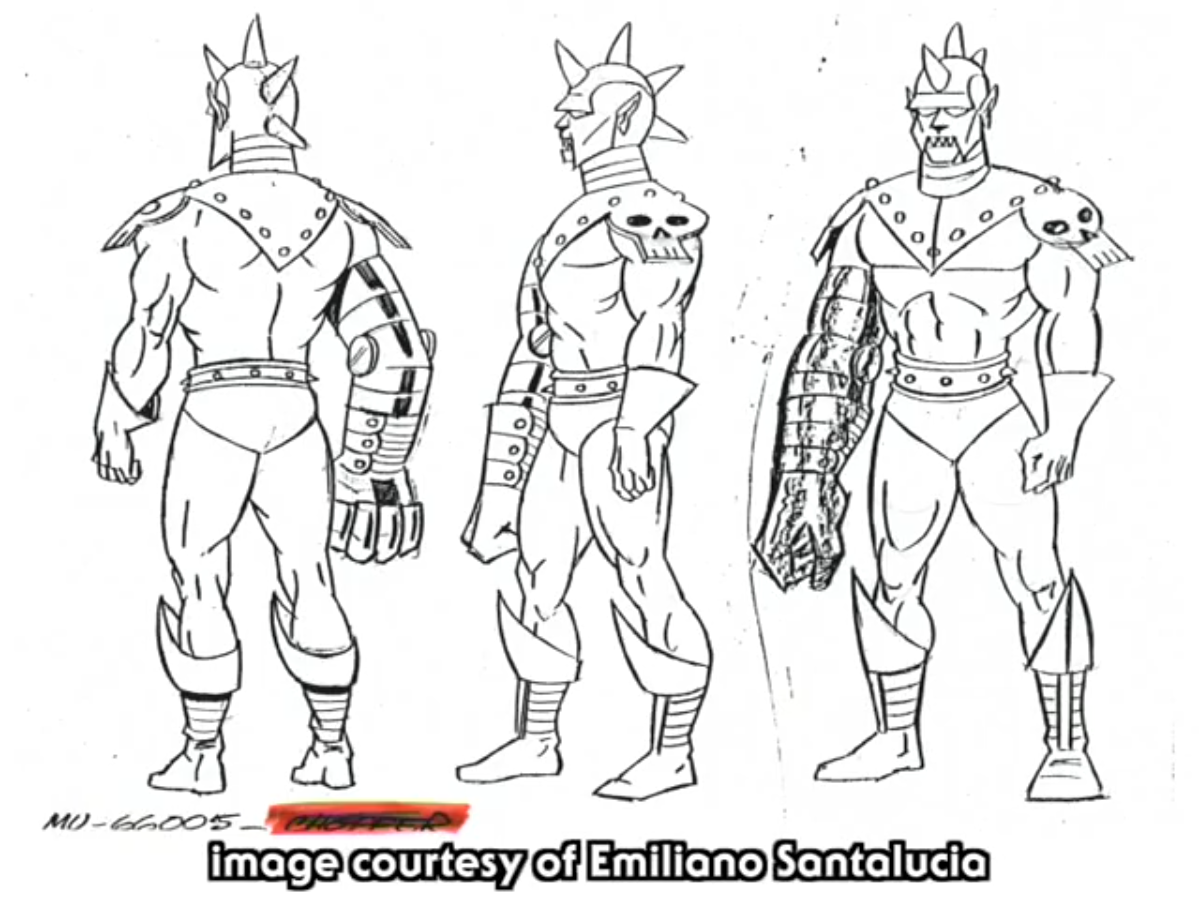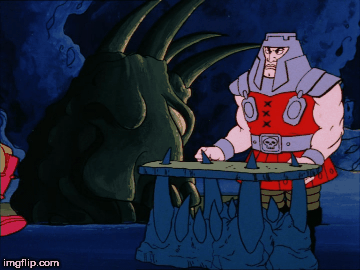
Written by Adam McCombs
Name: Road Ripper
Faction: Heroic Warriors
Approximate US release date: January 25, 1984
I remember getting the Road Ripper as a present when it came out in 1984. I want to say I got it at the same time as the Dragon Walker. It didn’t blow me away like the Dragon Walker did, but it was a memorable vehicle and I sent it speeding across the kitchen floor on many Saturday mornings.
The Road Ripper seems to have been the brainchild of Mattel designer Roger Sweet. I believe that an early working name for the vehicle was the Tri-Trak. As described in the December 1982 MOTU Bible, the Tri-Trak was “a three-wheeled motorcycle which He Man uses whenever he needs a fast ground transport. Tri-Trak travels most of the places the Attack Trak goes only much faster. The motorcycle bears two very deadly photon machine guns.”
An early version of the vehicle had a much smaller figurehead on the front of the vehicle, a couple of small fins on the back, and control handles for He-Man to hold on to. This early concept was colored red rather than green, and had a comparatively narrow front end.

A subsequent revision to the design was much closer to the final toy, with its enlarged figurehead and green color scheme. It was more highly detailed than the final toy, with additional orange and yellow triangular patterns and green mechanical details, but otherwise it’s very familiar to anyone who owned the production vehicle.


A somewhat similar concept was illustrated by Ted Mayer on September 29, 1983. It has the twin guns mentioned in the description of the Tri-Trak, although it seems to have four wheels, not three. It would have used a launcher base as a means of propulsion, with a similar ripcord feature. However, given that the Road Ripper was trademarked on August 22, 1983, this may have been a related idea and not a version of the Road Ripper itself.

According to the Power and the Honor Foundation catalog, Roger Sweet got the idea for the Road Ripper from the Evel Knievel Super Stunt Cycle.
The final toy has a rubber seat belt (similar to the ones used in the Attak Trak and Dragon Walker), rather than the clip featured in the concept artwork. The sculpt work is well-executed, and it’s augmented by a number of brightly colored stickers. It came with a long red ripcord, that, when pulled through the back of the vehicle, set a heavy rubber wheel hidden underneath the vehicle in motion, propelling the whole thing forward.







The cross sell art closely mirrors the toy, but it lacks some detail in on the back area of the vehicle:

The Road Ripper was sold individually and in a gift set with Battle Armor He-Man. The artwork on the front of both boxes was done by William George. They both have a sense of speed to them, and feature the artist’s usual desolate landscapes and fearsome little creatures:








Interestingly, the Road Ripper was originally going to come with the regular version of He-Man:

William George also illustrated the Road Ripper in this 1984 MOTU poster:

Argentinian manufacturer Top Toys produced a version of the Road Ripper in blue, although they retained the artwork on the packaging that depicted it in green:


Errol McCarthy illustrated the Road Ripper for a T-Shirt design:

The vehicle makes a two appearances in the Filmation He-Man cartoon, in “The Time Wheel” (thanks to Dušan Mitrović for pointing that out) and “The Energy Beast.” It doesn’t last long in the the latter story, as Orko starts up the vehicle and quickly crashes it, destroying it. Man-At-Arms remarks that he had spent six months working on it.



It also makes a single appearance in the mini comics. It shows up in a single panel in Temple of Darkness, illustrated by Larry Houston.

An off-model red version of Road Ripper shows up in Issue 71 of the UK MOTU magazine, which in turn originates from Ehapa MOTU issue 7 (thanks to Dušan Mitrović for pointing that out):

It also appears in the first issue of the US MOTU magazine, in the short comic story, Maddening of the Monstones. He-Man uses it as his primary means of transportation:




The Road Ripper never had the kind of permanence and ubiquitousness that other vehicles like the Wind Raider and Battle Ram had, but it was a fun little racer and I think it fit in well with the other Masters of the Universe vehicles. Surprisingly, Tonka even made a Road Ripper-themed crossover tricycle. I suppose that makes sense given the fact that the Road Ripper also has three wheels, but it’s an interesting choice given the general lack of exposure of the vehicle otherwise.

The general formula for MOTU vehicles really seems to be angular, Star Wars vehicle-like bodies, combined big engines and animalistic figureheads at the front, which is as good a description as any for the Road Ripper. In fact, it reminds me in many ways of the Battle Ram, and I wouldn’t be surprised if the Battle Ram were a major source of inspiration.



Want to support the blog? Consider becoming a Patreon supporter. You’ll also gain access to exclusive content and early access to posts on the blog. Thank you!




































































